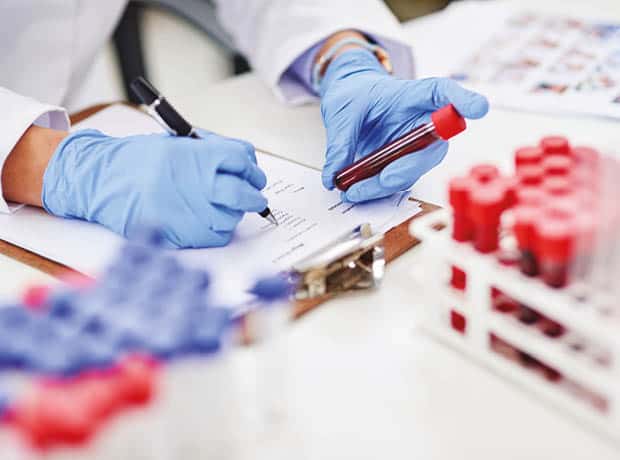LT-HSCs replenish blood cells after treatment for blood cancers such as leukemia.
Scientists at the University of Glasgow have developed the first bioengineered bone marrow model to support human stem cells, essential for bone marrow transplants and in vitro research.
Published in Nature Communications, The new model recapitulates key aspects of the human bone marrow microenvironment to support rare long-term hematopoietic stem cells (LT-HSCs).
Leukemia, which is estimated to cause more than 300,000 deaths worldwide each year, is a type of blood cancer that affects white blood cells in the bone marrow (the spongy tissue inside some bones where the body makes blood cells).
LT-HSCs are a type of cell that can replenish blood cells after treatment for blood cancers such as leukemia, but because of the difficulty of culturing them, researchers often turn to non-human animal models to test drugs that affect blood cell production and target blood diseases.
“The animal models currently used are not very useful for predicting drug effects, and many of the blood disease treatments currently on offer, such as mRNA drugs or human-specific small molecules, do not test well in animal models,” explains Matt Dalby, Professor of Cellular Engineering and Director of Innovation, Engagement and Enterprise in the School of Molecular Biosciences at the University of Glasgow.
Supported by UKRI’s Engineering and Physical Sciences Research Council, as part of a larger investment in leukaemia research in the UK, the scientists grew LT-HSCs outside the body in a gel-like substance and demonstrated that it was possible to gene edit LT-HSCs in the body.
The findings represent a potential new way to test new drugs and technologies for the treatment of blood disorders such as sickle cell disease – an inherited blood disorder that affects more than 20 million people worldwide – and blood cancers, while reducing reliance on animal models.
Dr Hannah Donnelly, a research fellow at the University of Glasgow who led the study, commented: “Here we show that by using a gel designed to mimic the environment of LT-HSCs in the bone marrow, we can support and study LT-HSCs in the laboratory and ultimately realise their full clinical potential.”







